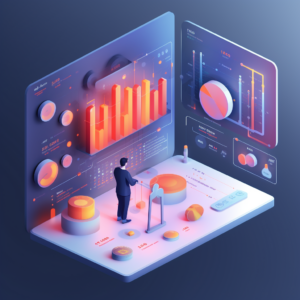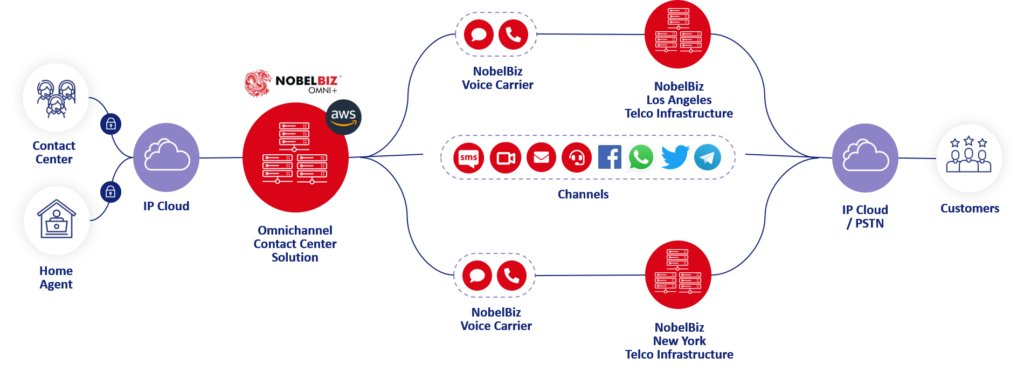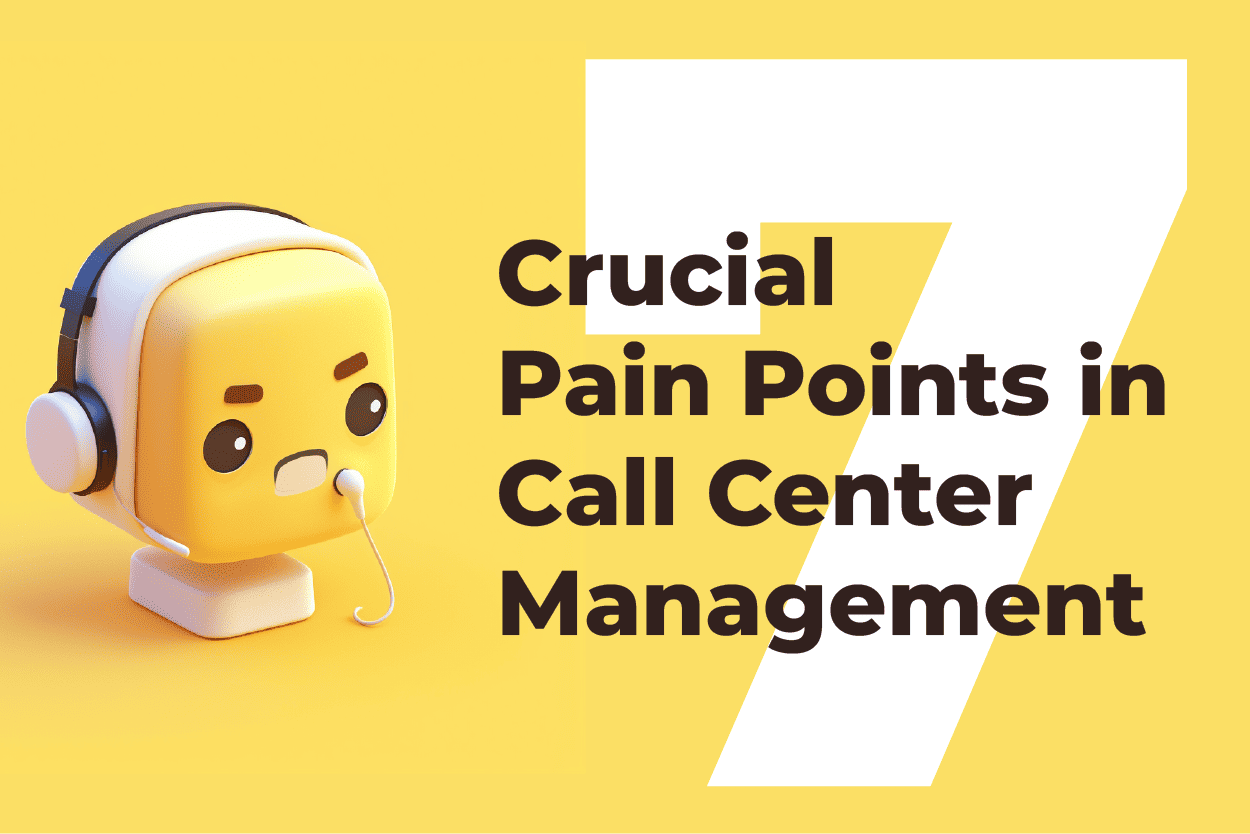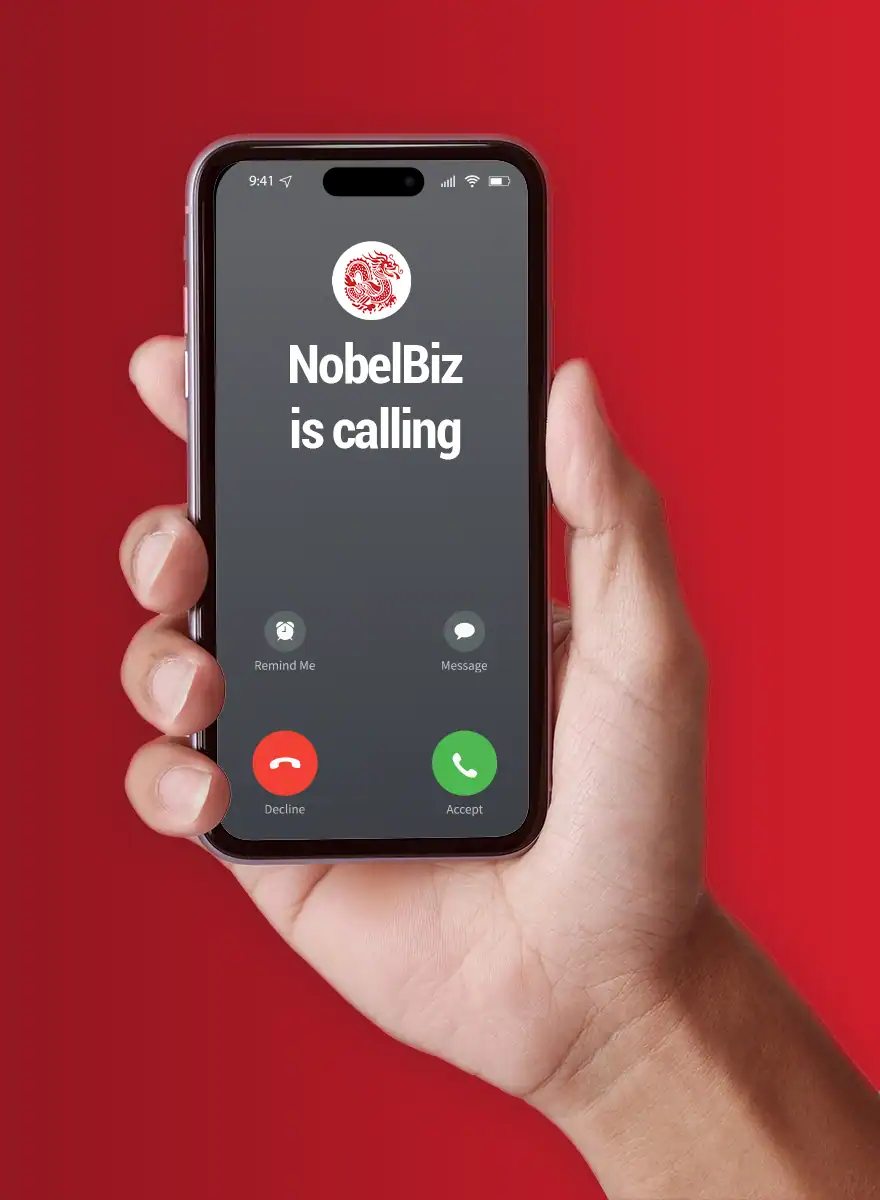In the dynamic and ever-evolving world of call center management, owners and operations managers face a myriad of challenges that demand their attention and expertise. From the constant quest to deliver exceptional customer service to the intricate balancing act of optimizing team performance, this realm is a labyrinth of complexities.
Today we’ll delve deep into the pain points that frequently plague call center executives. These challenges, often hidden beneath the surface, can significantly impact the success and efficiency of call center operations.
Throughout this article, we will shine a light on these critical pain points, providing insights, solutions, and practical strategies to address them head-on. Whether you’re a seasoned professional or just entering the field, our goal is to equip you with the knowledge and tools needed to navigate the call center landscape successfully.
1. Integration Issues
Integration issues arise when different software systems, often from various vendors or developed at different times, cannot easily communicate or work together. According to shelf.io, 91% of companies report their agents must access multiple screens during an interaction. This can lead to a range of operational inefficiencies, errors, and increased costs.
Integration issues within contact centers are not mere obstacles; they are the bridges to seamless customer experiences, connecting the dots between customer data, efficiency, and satisfaction. – Brad Butler, Contact Center Software Consultant @NobelBiz
- Legacy Systems: Older software, or “legacy” systems, might not be designed to integrate with newer tools. This disparity can be due to outdated coding standards or a lack of modern interfaces like APIs (Application Programming Interfaces).
- Mismatched Data Structures: Even if two systems can communicate, differences in data structures can lead to incorrect or inefficient data transfers. For instance, how one system records a customer’s contact details might differ from another.
- Duplicated Efforts: Without effective integration, agents might need to manually enter or transfer data between systems, leading to potential errors and wasted time.
- Customer Experience Impact: Disjointed systems can lead to inconsistent customer experiences. For instance, if a customer’s complaint is logged in one system but isn’t visible in another, it might not be addressed adequately.
Example from a Call Center Perspective
Think of a call center using an older CRM system for customer management and a new ticketing system for handling complaints. If these two systems don’t integrate smoothly, an agent might have to manually check two separate systems to get a full picture of a customer’s history. This manual process slows down the resolution time, leading to longer call durations and potentially frustrated customers.
Solving contact center integration issues with Nobelbiz
Nobelbiz recognizes the importance of seamless integration. Our platform is built with open standards and offers robust API capabilities. This ensures that, whether integrating with legacy systems or newer tools, operations remain smooth and efficient.
By consolidating data sources and providing a unified interface, agents can quickly access all the information they need, enhancing their productivity and improving customer experiences. Last but not lease, Nobelbiz’s experience in the industry means they understand common integration pain points and have designed OMNI+ to mitigate these challenges effectively.
2. High Costs
The technological landscape, especially in the call center industry, is dynamic and everchanging. The pace at which new technologies, features, and updates are introduced can lead to frequent system upgrades or changes. While these updates are intended to improve efficiency or capability, they often come with significant costs.
- Direct Financial Costs: Every time a call center adopts a new software or tool, or updates an existing one, there are expenses for licensing, implementation, and possibly hardware upgrades.
- Training Costs: New or updated software often requires training sessions for the staff. This training represents a double cost: the expense of the training program itself and the time agents spend away from their primary tasks.
- Operational Disruptions: Transitioning to new systems or updates can lead to temporary operational disruptions, affecting service quality. Downtime or glitches during transitions can be costly in terms of customer satisfaction and potential loss of business.
- Compatibility Issues: Upgrading one piece of software might necessitate changes or upgrades to other tools to maintain compatibility, leading to cascading costs.
- Maintenance and Support: Newer systems or features might require enhanced support packages or maintenance agreements, adding to the ongoing operational costs.

Read this article to find the Top 12 Call Center Cost Reduction Strategies: Unlock Your Call Center’s Full Potential.
Example from a Call Center Perspective
A call center uses a specific CRM system that releases a major update. The update promises improved features but comes at a high licensing cost. Additionally, the update requires more powerful server specifications, necessitating hardware upgrades. Once implemented, the center realizes that the updated CRM no longer integrates seamlessly with their ticketing system, meaning further expenses. Agents require training to use the new CRM features, leading to operational slowdowns during the training period.
Reduce your costs with Nobelbiz
The sad truth is that many contact centers end up paying more than they bargained for with their telecom, software, or CCaaS providers. Being stuck in long-term contracts with subpar providers, contact centers pay big in terms of business friction and mental anxiety. Bad infrastructure paired with slow and heavy servicing protocols can take a heavy toll on the short and long-term performance of ANY contact center. But there’s a better way!
NobelBiz is committed to keeping these hidden costs in check by designing and deploying one of the best-performing servicing systems as a contact center telecom and software provider.
- In-house client advocate servicing model.
- Free Premium 24/7/365 Support out-of-the-box.
- No mandatory long-term agreements.
- Proprietary voice carrier network (which usually spells better cost-per-minute rates)
3. Training
With the adoption of new technologies, tools, or systems in the call center environment, there arises a need to train the staff to efficiently use these innovations. This training is crucial for ensuring smooth operations and maximizing the benefits of the new tech. However, the training process can be time-consuming, potentially disruptive, and come with associated costs.
- Time-Related Costs: Training requires agents to step away from their regular tasks. This time away can mean reduced productivity during the training period.
- Financial Costs: Effective training might necessitate hiring external trainers, purchasing training materials or programs, or even traveling to training facilities.
- Inconsistency in Uptake: Not all agents will grasp new tech at the same pace. Some might quickly adapt, while others may struggle, leading to inconsistencies in service delivery.
- Operational Disruptions: A mismatch between trained and untrained agents can lead to operational bottlenecks. For instance, if only a portion of the team knows how to use a new feature, it can cause delays or miscommunications.
- Keeping Pace with Tech Evolution: As technology evolves rapidly, there might be a need for recurrent training sessions, amplifying the challenges mentioned above.
Example from a Call Center Perspective
A call center introduces a new AI-powered chatbot system to help with customer queries. While the technology promises efficiency, agents need to understand how to monitor, override, or complement the chatbot’s actions. The center arranges a series of training sessions, which means agents are unavailable for their regular duties during these periods. Some agents master the system quickly, while others face challenges, leading to uneven customer service in the transition phase.

Watch this episode on Holistic Call Center Training using Rewards and Recognition, with Michael Tamer from our podcast FIRST CONTACT: Stories of the Call Center
Step up Your Training Game with Nobelbiz OMNI+
Nobelbiz OMNI+ offers a simplified and optimized omnichannel contact center technology. With its intuitive design, the need for extensive training is minimized. Agents can easily transition between various channels, whether it’s voice, email, chat, or social media, all from a single interface, ensuring a reduced learning curve.
Nobelbiz OMNI+ is designed to simplify agent workflows, which means that even as new features or integrations are added, the foundational user experience remains consistent, making it easier for agents to adapt.
The value of constant training for call center agents isn’t an expense – it’s an investment in excellence, where every interaction becomes an opportunity to shine. – Christian Montes, Executive Vice President of Client Operations @NobelBiz
4. Reliability
The introduction of new technologies in any operational setting often brings with it concerns about reliability. For call centers, which handle high volumes of customer interactions, the reliability of their tech stack is paramount. Unreliable tech can lead to bugs, downtime, decreased performance, or even data breaches, all of which can damage a company’s reputation and bottom line.
- Downtime: Downtime, whether due to software issues, server problems, or maintenance, can severely disrupt call center operations, leading to missed customer interactions and potential revenue loss.
- Performance Issues: Even if the software is functional, performance lags or inefficiencies can hinder agents’ capabilities, leading to longer call times or customer dissatisfaction.
- Data Integrity and Security: New tech, if not properly vetted, might pose risks to data integrity or security, leading to potential breaches.
- Dependency on External Vendors: Relying heavily on external vendors for support can lead to delays in addressing tech issues, especially if their response time isn’t optimal.
Example from a Call Center Perspective
A call center introduces a new ticketing system. While it promises advanced features, in its initial days, the system occasionally crashes, leading to lost data. This not only affects customer service but also frustrates agents who need to redo their work. Furthermore, as they wait for the vendor to release a patch, they experience decreased overall performance.
Reliability isn’t just a checkbox; it’s the cornerstone of a call center’s tech-stack, ensuring every interaction is a success story waiting to happen. – Christian Montes, Executive Vice President of Client Operations @NobelBiz
Reliability Redefined: Nobelbiz OMNI+ Is Your Trusted Omnichannel Contact Center Solution
 Nobelbiz OMNI+ is more than just a tool; it’s a complete omnichannel contact center solution that’s been developed with reliability at its core. Built upon the foundation of Nobelbiz’s 20+ years of industry experience, it’s designed to anticipate and mitigate the common challenges call centers face with technology.
Nobelbiz OMNI+ is more than just a tool; it’s a complete omnichannel contact center solution that’s been developed with reliability at its core. Built upon the foundation of Nobelbiz’s 20+ years of industry experience, it’s designed to anticipate and mitigate the common challenges call centers face with technology.
With Nobelbiz OMNI+, call centers get an advanced, full-featured solution that’s continually refined to adapt to customers’ complex requirements and ever-changing industry trends. This means that as technology evolves, the solution remains robust, reducing the chances of bugs or performance issues.
Being a cloud contact center solution, it diminishes the concerns related to server downtimes, ensuring seamless operations. The platform’s architecture, combined with Nobelbiz’s commitment to excellence, ensures that call centers equipped with OMNI+ enjoy high uptime, dependable performance, and a secure environment.
In essence, for call centers looking for a dependable tech solution, Nobelbiz OMNI+ stands as a benchmark of reliability and performance.
5. Scalability
Scalability pertains to a system’s ability to grow and manage increased demand effectively. In the context of call centers, as the business expands or faces peak demand periods, the technology in use should be able to accommodate this growth without sacrificing performance, speed, or reliability.
- Performance Bottlenecks: As a call center grows, some tech solutions may not be equipped to handle the increased volume of calls or data, leading to lags or system crashes.
- Infrastructure Limitations: Traditional on-premises systems might necessitate extensive hardware upgrades to scale, which can be costly and time-consuming.
- Flexibility Issues: Some solutions might be rigid in their design, making it challenging to add new features or integrations that become necessary as the business scales.
- Cost Escalation: While initial costs of a tech solution might be affordable, scaling it might lead to disproportionate cost increases, straining the call center’s budget.
- Operational Disruptions: Transitioning to a more scalable solution might lead to operational interruptions, affecting customer service during the transition period.
Example from a Call Center Perspective
A call center that started with 50 agents grows over two years to employ 200 agents. Their initial CRM system, suitable for their initial size, begins to experience slowdowns and occasional crashes with the quadrupled user load. Additionally, adding new licenses for the expanded team becomes increasingly expensive.
Contact Center Elasticity and Scalability with NobelBiz
The easiest way for a contact center to take full advantage of an elastic and scalable infrastructure is to deploy a cloud contact center software solution such as NobelBiz OMNI+.
A truly elastic and scalable cloud platform allows unprecedented business mobility and opens the contact center to a new world of possibilities. Virtually all the contact center infrastructure elements of the NobelBiz OMNI+ software are imbued with a healthy dose of elasticity:
- Same dashboard for voice calls and digital channels.
- Omnichannel: consistent interactions across every channel
- Server redundancy with guaranteed 99.9 uptime
- Out of the box integrations with some of the most popular third-party solution for the contact center industry, from CRMs to payment processors and database management.

The NobelBiz Voice Carrier Network was designed with the sole purpose of serving contact centers all over the world. This is why our unique carrier-of-carriers telecom infrastructure has built-in scalability and elasticity capabilities:
- Insane network redundancy and voice quality
- Integrated TCPA compliances and legal support.
- Special cost-per-minute rates to suit high volume consumers such as call centers.
- A host of other productive tools such as smart routing, web-based admin, number provisioning, and more.
6. Data Security
In an age of frequent cyber-attacks and data breaches, ensuring the security and privacy of customer data is of paramount importance. For call centers, which often handle sensitive customer information, the challenge becomes even more pronounced. Cloud solutions, while offering numerous benefits, often raise concerns about data security.
- Vulnerability to Breaches: Without robust security measures, call center data, especially in cloud environments, can be vulnerable to cyber-attacks.
- Compliance Concerns: With regulations like GDPR and CCPA, call centers must ensure that their tech solutions comply with data protection laws. Non-compliance can lead to hefty fines.
- Access Control: Ensuring that only authorized personnel have access to sensitive data is crucial. Ineffective access controls can lead to data misuse.
- Data Transfer and Storage: When using cloud solutions, data is often transferred across networks and stored off-premises. Ensuring its safety during these processes is vital.
- Reputation Risks: A data breach can severely tarnish a company’s reputation, leading to lost customer trust and potential business losses.
Example from a Call Center Perspective
A call center that uses an outdated CRM system experiences a data breach where customer financial details are exposed. This not only results in financial repercussions due to non-compliance with data protection laws but also in significant reputational damage as customers lose trust in the company.
Read this article on The Challenges of Managing Customer Data in Contact Centers
Safeguard your data with NobelBiz OMNI+
Nobelbiz OMNI+ and the broader Nobelbiz Cloud Solution prioritize data security and privacy. Recognizing the importance of safeguarding customer information, these platforms are meticulously designed to provide a secure environment for call centers.
Here’s how:
- Compliance with Regulations: OMNI+ from Nobelbiz is designed to adhere to industry standards and regulations. This ensures that call centers using their solutions can confidently comply with data protection laws.
- Secure Data Transfer and Storage: Data transferred and stored within Nobelbiz OMNI+ is protected using advanced encryption techniques, ensuring it remains safe from potential breaches.
- Advanced Access Controls: The solutions provide granular access controls, ensuring that only authorized personnel can access sensitive information. This minimizes internal risks related to data misuse.
- 24/7 Monitoring: Continuous monitoring ensures any potential threats are promptly identified and addressed, keeping data safe round-the-clock.
Multi-channel Integration
Today’s customers interact with businesses through a myriad of channels, including phone, email, chat, social media, and more. For call centers, ensuring a consistent and seamless omnichannel customer engagement experience across all these channels requires integrating them effectively into a unified system. Without proper integration, there’s a risk of disjointed communication, missed messages, or duplicated efforts.
- Disjointed Customer Experience: Without integration, customers might have to repeat their issues every time they switch channels, leading to frustration.
- Operational Inefficiencies: Agents might waste time juggling between different systems for each channel, affecting their productivity.
- Missed Messages: Important customer messages or inquiries might be overlooked if they’re spread across disconnected platforms.
- Data Inconsistencies: Without a unified system, customer data might become inconsistent or outdated across different channels.
- Increased Training Demands: Agents would need to be trained on multiple systems, leading to longer onboarding times and potential errors.
Example from a Call Center Perspective
A customer first sends an email about an issue they’re facing. Not getting a prompt response, they decide to call the helpline. The agent they speak to has no record of the email, and the customer has to explain their problem all over again. Later, the customer gets two different responses—one for the email and another from the phone conversation—leading to confusion and dissatisfaction.
Experience True Omnichannel with Nobelbiz OMNI+
NobelBiz OMNI+ contact center software epitomizes the true essence of an Omnichannel solution. It seamlessly handles a diverse array of communication channels simultaneously – be it voice calls, SMS, WhatsApp, or Facebook Messenger.
From orchestrating intricate campaigns to serving a multitude of industries, from e-commerce and customer service to technical support and financial consultancy, it accomplishes it all from a single, user-friendly dashboard. With NobelBiz OMNI+, you’re not just managing channels; you’re orchestrating a symphony of customer interactions, all in perfect harmony.
Conclusion
As we conclude this eye-opening journey through the intricacies of call center challenges, keep in mind that every hurdle is an opportunity in disguise. But, my friends, rest assured, our adventure is just beginning!
Stay tuned for the second part of “Pain Points for Call Center Owners and Operations Managers,” where we’ll uncover even more valuable insights and strategies. And when it comes to addressing your contact center technology needs, don’t hesitate to reach out to a NobelBiz representative today. Let us be your trusted partner on this journey to success. Until next time, keep those headsets on, your spirits high, and your contact center flourishing! Contact us now to learn more!

Michael McGuire is a contact center industry expert with almost two decades of experience in the space. His experience includes roles as Director of Contact Center Digital Transformation at NobelBiz, and as Director of Operations at FLS Connect, managing multiple call centers. As President of Anomaly Squared and Targeted Metrics, Michael successfully transitioned companies into remote operations and significantly boosted revenues. With a strong background in customer service, leadership, strategic planning, and operations management, Michael excels in driving growth and innovation in the call center space.
Mike is also a proud Board Member for R.E.A.C.H Trade Group, promoting consumer protection and satisfaction and Co-host of the Off Skripted Podcast – a show about Life, Call Centers and everything in between.







